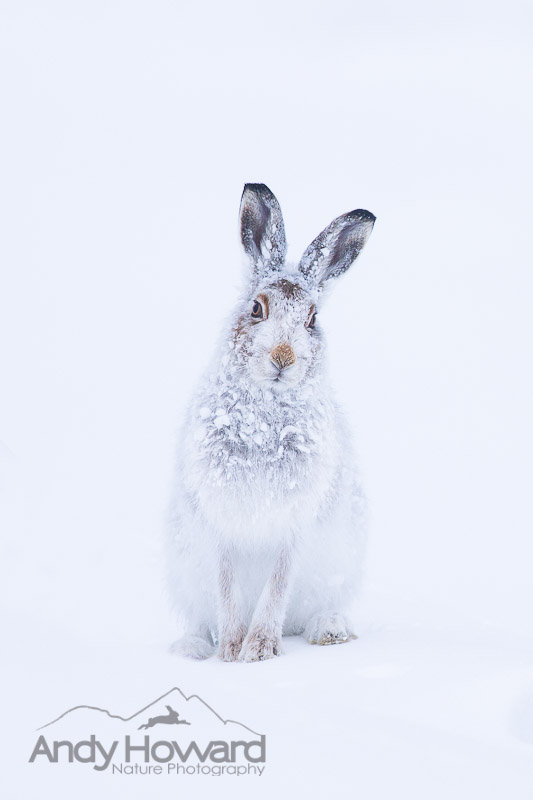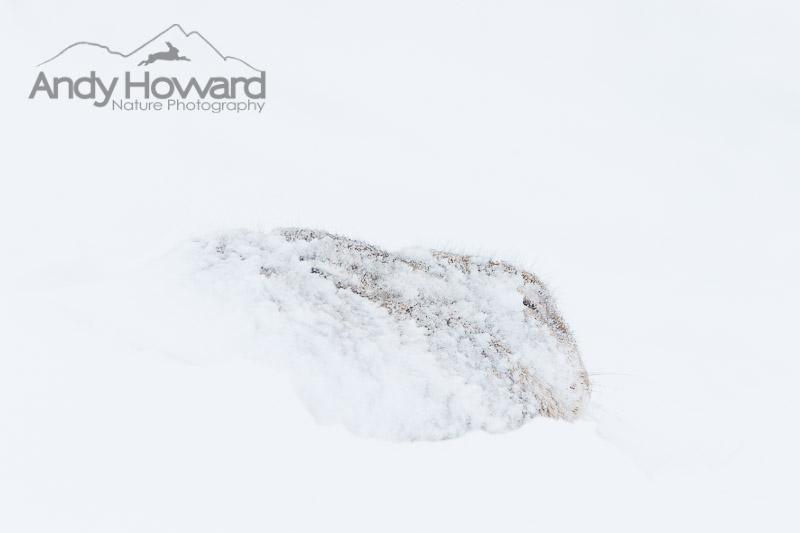How to Photograph Mountain Hares

Let’s get straight to the point. I absolutely adore mountain hares; in fact my love for them is bordering on being obsessive. Now we’ve got that out of the way, we can move on to how to photograph one of the most enigmatic and endearing wild animals in the UK!
Mountain hares, unlike their brown cousins, are native to the UK and since the last Ice Age have retreated to the high hills and mountains of Scotland. A small population can also be found in the Peak District but these were reintroduced from Scottish stock and were released there for their ‘sporting’ value. In Ireland and on the Isle of Mull, another sub-species called Lepus timidus hibernicus can be found. These hares rarely turn white in the winter and are generally more ginger in appearance.


It’s with a sad irony that one of the best habitats to look for Mountain hares is on the upland Grouse Moors; this sadly puts them into direct conflict with the field sport industry. It is believed that the hares carry ticks which in turn pass on a fatal virus to young grouse. Some Highland estates I know of carry out a complete cull, whilst others control the numbers on a sustainable basis. I’m glad to report that there are also other estates that actively encourage and protect the hares.
I found my first Mountain hares by noticing a squashed one in the middle of the road. I figured if there’s one around, there will be more very close by; this proved to be correct and I found a good healthy population on the nearest hilltop. I’ve noticed that wherever you find hares, they show the same fondness for where they locate their ‘forms’ – forms are hollowed out scrapes in which the hares sit in during the day. On flat plateaus, these tend to be either behind a large rock or directly under the rim of an overhang of turf or heather. It’s always best to approach the hares from the bottom of a slope because they like a ‘room with a view’ and will nearly always sit with their backs to the slope; this leads me to my next point.
If you’re out with a friend or friends, know that hares get very nervous if they are approached from two opposing directions, so always try to stay close together and once a hare has been located approach in a very slow and direct manner. There are some very subtle but tell-tale signs that a hare isn’t comfortable with your approach. First of all it will start to twitch – this is it warming its muscles in readiness to take flight. Secondly, it will lay very flat with its ears pressed firmly onto its back. It’s obvious when you see photographs of a fearful hare – you can see the fear in its eyes! Thirdly, and probably the most subtle of all, is the position of the hare’s head. If it starts to turn its head away from you, it’s checking that its exit is clear and that it has somewhere to run to; this tends to be uphill and at great speed.
The most important aspect of how to photograph mountain hares has to be field-craft. If you don’t have any, practise some key pointers before you attempt to go near to them. If you don’t, you’ll get frustrated and even worse you’ll spook every hare you find. Here are my tips on how to approach a hare once you’ve found one:
- Walk slowly and directly towards the hare. Don’t hide behind rocks or terrain – the hare will be a lot happier if it can see you and knows exactly where you are. Once you’re within 100 metres, look at the hare. Is it happily sitting there as when you first spotted it? If so proceed. If it’s looking nervous, sit down and wait a while and observe its body language. It can take anything from 5 to 15 minutes for a hare to settle again.
- Once you get to within 50 metres, drop to ground level and start to crawl towards the hare. Go slow… go very slow. I can’t reiterate the importance of this enough. If you approach too quickly it’s bad for you and even worse for the hare. If you notice the hare is still twitching or moving around, then STOP! Wait for it to settle back down and then move a little bit closer. The speed of your approach will be dictated by the tolerance of the individual hare.
- Once you are happy that the hare is relaxed, don’t push your luck. Each hare has a ‘circle of fear’ and this can only really be judged with experience or with the presence of a guide. Hares that will tolerate you to within a few metres are few and far between, so please don’t assume that all hares will allow you to get that close. Remember the welfare of the animal is paramount.
- Once you’re happy with your position be prepared to sit for a very long time, it’s not unusual for me to spend up to 5 or 6 hours with a hare. Patience will be rewarded with great photographic opportunities if you sit quietly and don’t fidget and move around! This is where ‘quiet’ fabric outer garments can really help. If you’re lucky you may get a hare that is confident enough that you’re not a threat and will start to preen and clean itself. It may even stretch and yawn. A word of warning on this front: a hare is very tall when at full stretch, so try not to be too close when this happens or it may not fit in the frame. Once a hare has accepted you as part of the scenery it may even have a snooze in front of you. I’ve actually witnessed one ‘dreaming’!
On a parting note: Please remember to treat the hares with the utmost respect. Do this and they will reward you with a small insight into their mysterious world.










